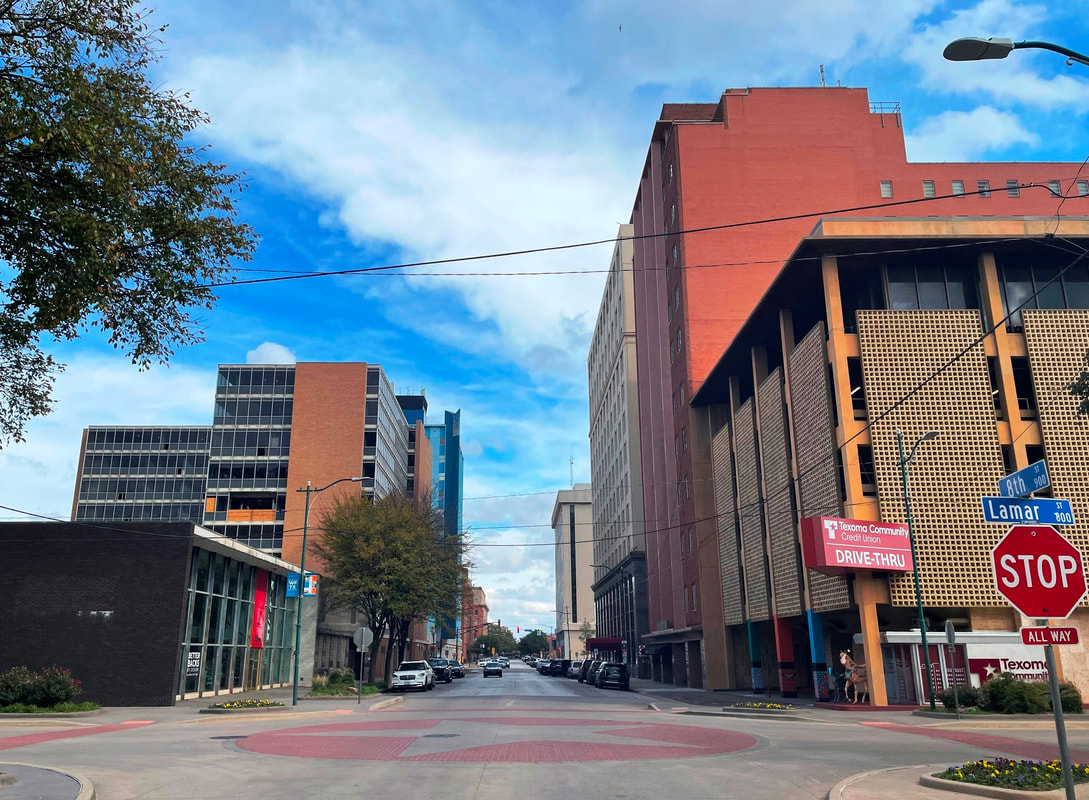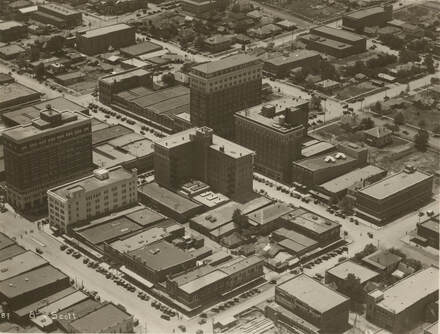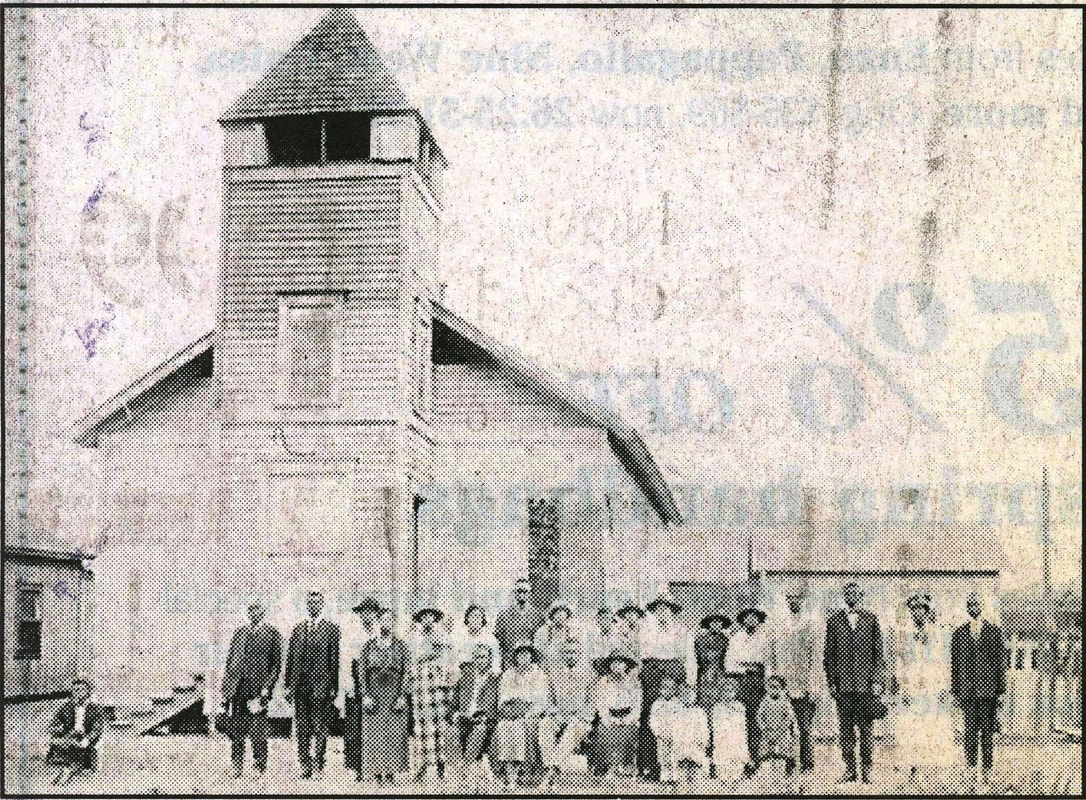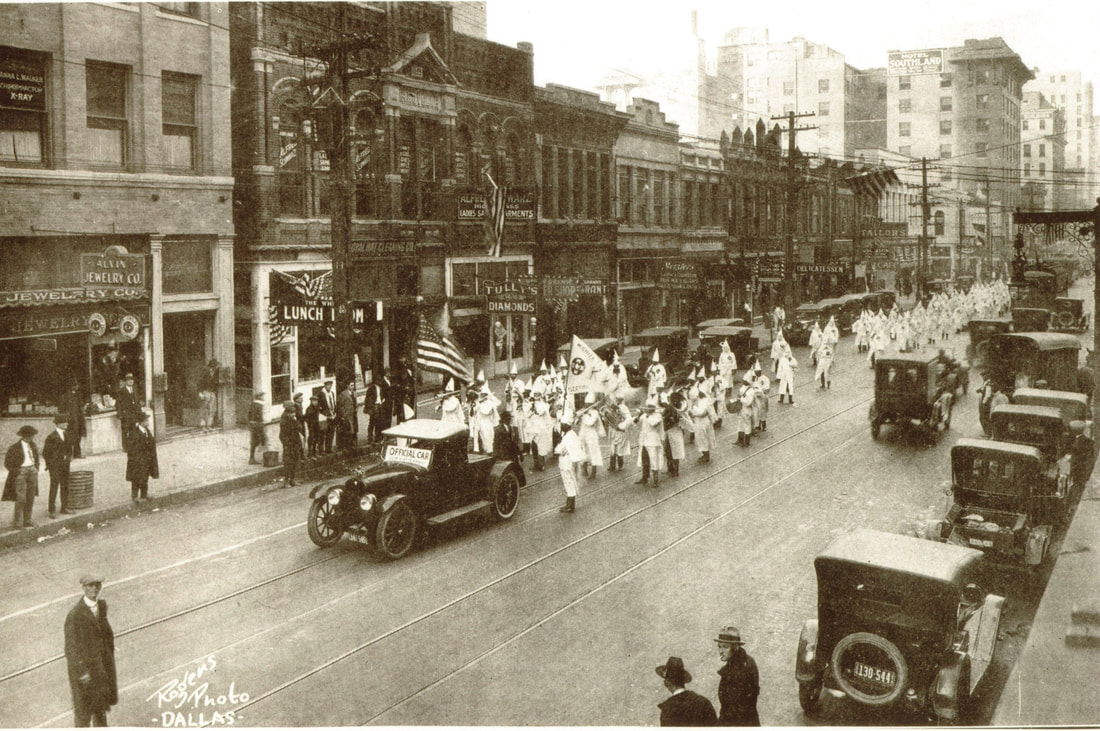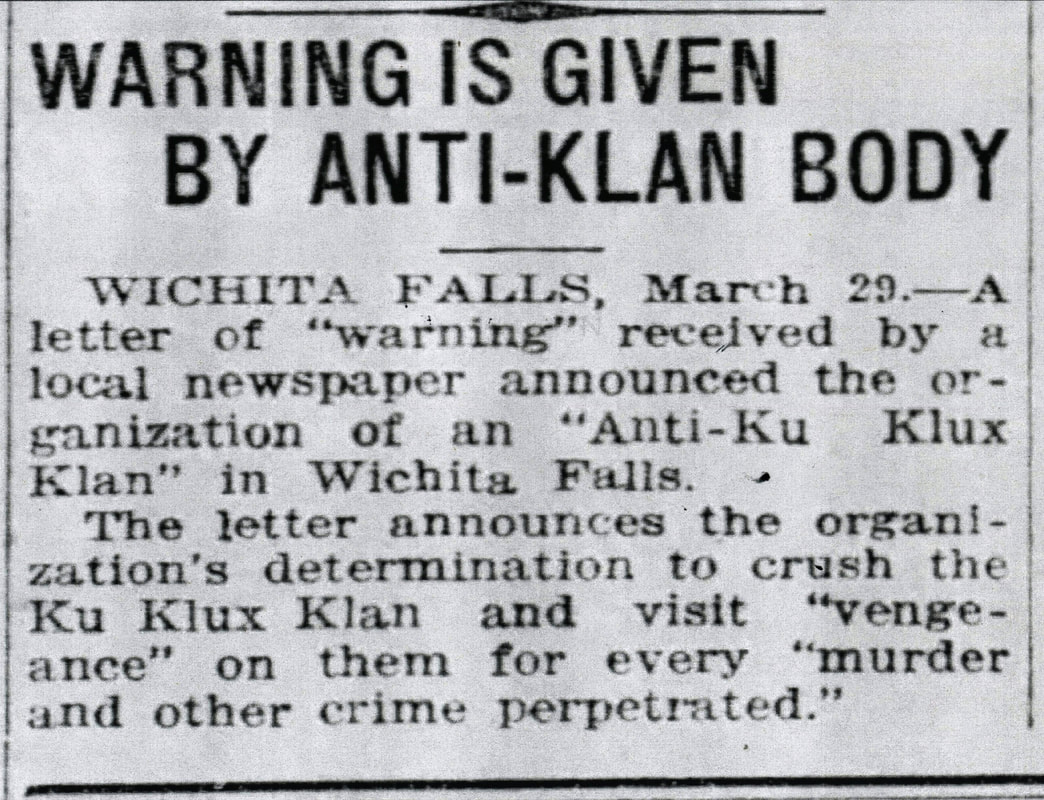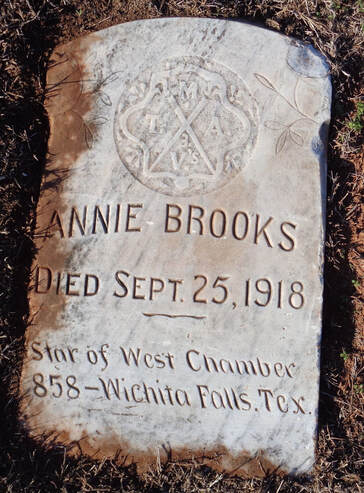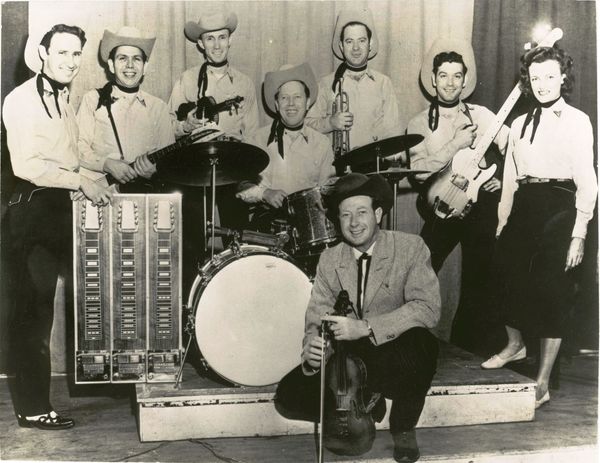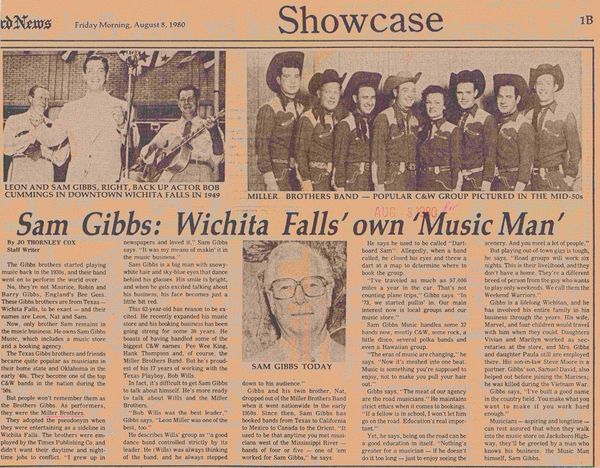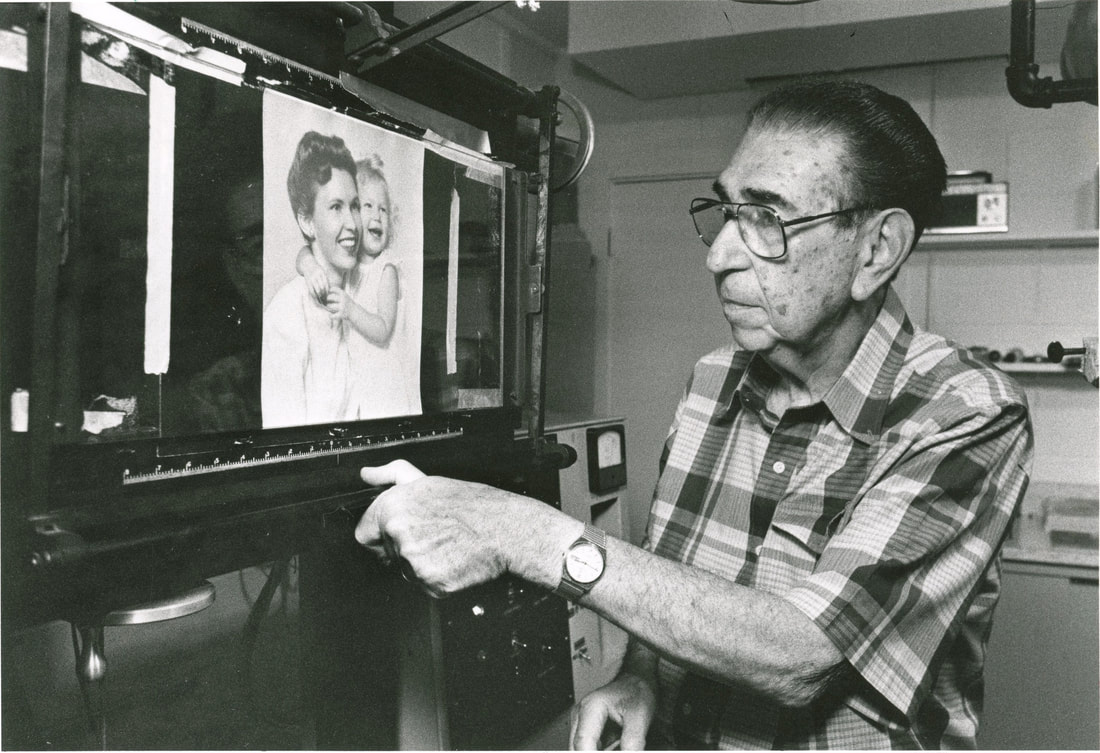Posted by the Wichita County Texas Archives on Facebook.
Click on the green button to take you to the posts.
Click on the green button to take you to the posts.
THEN and NOW. Comparing Wichita Falls to other cities across the state can be a little deceiving. Looking at our population, one can see we’re not a Big City. But then, looking at our skyline, you’d know right away we’re not a small town. As it turns out, we are a combination of both. We have the ease getting anywhere in town pretty fast, plus we have a pretty good selection of amenities.
You might say Wichita Falls is a BIG Small Town.
You might say Wichita Falls is a BIG Small Town.
|
The skyline of Wichita Falls was changed dramatically by the Oil Boom of 1918. Most folks don’t know the impact of the oil boom until they see the numbers. In the 1910 US Census, Wichita Falls had about 8,000 citizens. By 1920, the population was over 40,000. In 1920, Wichita County produced more oil than any other county in the United States.
|
The oil fields have faded, but the luster of Wichita Falls still shines on. Most of us know the names of the Wichitains that made their fortunes and built this city from nothing. But what of the men that came to town, lured by the riches in the oil field, made their money and left.
|
|
One such family that came to Wichita Falls seeking wealth was Dr. E.P. Bass and his wife Anne. They ended up building this home on 9th Street near the Morningside Addition. Dr. E. Perry Bass formed a oil drilling company with A.R. Dillard called Bass & Dillard. In 1914, they had their one and only son, Perry Richardson Bass, born in Wichita Falls. By the way, Dr E.Perry Bass and his wife, Anne are buried here in Riverside Cemetery. Their son left WF to Fort Worth with his inheritance. By the way, Dr E.Perry Bass and his wife, Anne are buried here in Riverside Cemetery.
|
Anne Bass’ little brother, Sid Richardson also came to Wichita Falls to seek his fortune. Sid and his boyhood friend from Athens, Texas, Clint Murchison formed an oil production company called Richardson & Murchison with an office in the Bob Waggoner Building at 8th & Scott (later known as “Big Blue”). Both Sid and Clint made their millions, then left for Fort Worth and Dallas. Perry Richardson Bass also moved to Fort Worth to work for his Uncle Sid Richardson. Perry and his four sons would eventually inherit all of Sid’s wealth. The Bass Family has continued to make a big splash on the scene in Fort Worth. Clint Murchison also did very well in Dallas. One of his sons, Clint, Jr. started a professional football franchise in Dallas that became pretty famous. And to think they all had their start in the BIG Small town of Wichita Falls.
|
Racial and Ethnic Tension in Wichita Falls. This is a narrative that could have been written one month ago or 100 years ago. It deals with the human condition and conflict. It has been said that “one cannot be human without being in conflict”. Life is a series of conflicts with yourself and those you come in contact with. We can reduce it down to “conflict is life, and life is conflict”. A person can be judged on how they deal with conflict. Racial and ethnic conflict has been in Wichita Falls and North Texas since it was settled.
|
The world renowned company of Zale’s Jewelry Stores was started in North Texas in the early 1920’s by Russian Jewish emigrant, Morris Bernard Zalefsky. He learned the jeweler trade from his uncle, Sam Kruger and opened his first store in Graham, Texas. Under threats from the Ku Klux Klan, Morris left Graham in 1924 and opened a store at 8th & Ohio in Wichita Falls. He shortened his last name to Zale and the soon to be global corporation was born. We have to ask if “conflict” strengthened his resolve to succeed.
|
The first black church in Wichita Falls was the Mount Pleasant Baptist Church, organized in April 1891. Members of the church met in their homes for the first few years. By 1895, a couple lots had been purchased on Barwise Street near the railroad tracks and a church was built. That church was dynamited. A new church was built at 101 Pecan Street and that church was also dynamited. Members of the church had a pretty good idea of who was behind the bombings, but no one was ever charged. A third church was built in 1897 at 104 Pecan Street. At that location the church would thrive and continued to grow and move to several different locations over the years. During those first years there was a lot hardship and suffering, but their hearts never turned to hate. Today, the Mount Pleasant Baptist Church is the largest black church in Wichita Falls. Once again, we have to ask if “conflict” strengthened their resolve to succeed
|
|
In this photo, the Electra, Texas Chapter of the Ku Klux Klan is marching in a parade in Dallas. The Ku Klux Klan had several other chapters organized in the North Texas Area to include the cities of Bowie, Graham, and Wichita Falls. The ideologies of the Klan were rooted in conflict, intimidation and mis-information.
|
This article was published in the Fort Worth Star-Telegram on March 29, 1922. The Ku Klux Klan Chapter 195 of Wichita Falls was re-organized around 1920. The Wichita Falls Klan had an office at 812½ Scott Avenue and a meeting hall at 1414 N. 6th Street. The Klan tried to make their doctrine a mainstream way of thinking much to the dismay of the majority. By 1930, the Klan in Wichita Falls had disbanded and their real estate foreclosed on. The citizens of Wichita Falls came together to rid themselves of the white hooded group. Ask yourself how conflict played a part in disbanding the Klan.
|
|
The headstone of Annie Brooks which is located in Riverside Cemetery in Wichita Falls is what started this narrative on “conflict”. Before discovering this headstone, nothing was known of Mrs. Brooks or the emblem and epitaph inscribed. After several days of research, we solved the mystery. The emblem at the top of the headstone is the logo for the Mosaic Templars of America. Mrs Brooks was a member of that organization in the Star of the West Chamber No. 858 in Wichita Falls. The Mosaic was organized to offer health, life and burial insurance for African Americans, services they were denied by white companies. The Mosaic was active in Wichita Falls from about 1909 until 1930, during the time of conflict brought on by the Ku Klux Klan. The Mosaic was instrumental in the establishment of Mount Pleasant Baptist Church by purchasing the property it was built on at 104 Pecan. One of the pillars of the black community at that time in Wichita Falls was Zenobia Trimble. She alone boosted membership in the local Mosaic chapter to over 80 individuals. She also served on the national board of Mosaic Templars in Little Rock, Ark. The African American community of Wichita Falls became organized and was solidified in spite of the conflict they faced, with the fight making them stronger. |
Torin Halsey, photographer for the Times Record News, has donated his collection of photos to the Wichita County Archives. His collection includes more than 8000 images of all aspects of life in Texoma. Highlights of the collection include 3 years of the Dallas Cowboys Training Camp in Wichita Falls, 17 years of Hotter N Hell, and a vast array of news and sporting events from 2013-2020.
Torin’s photos artistically capture every aspect of life in North Texas. Looking at those images, you feel as if you are right there watching the scene unfold. After almost 40 years in photojournalism, 36 of them with the Times Record News, Torin decided to retire in July 2022.
Torin’s photos artistically capture every aspect of life in North Texas. Looking at those images, you feel as if you are right there watching the scene unfold. After almost 40 years in photojournalism, 36 of them with the Times Record News, Torin decided to retire in July 2022.
April 19, 2016. Heavy rainfall in the North Texas area over the weekend has again brought Lake Arrowhead to capacity with water over the spillway.
April 26, 2015. Rain came down in sheets Monday morning in this view of downtown Wichita Falls looking north in the 1000 block of Lamar. this was the beginning of the end of the years of the long drought in Wichita Falls and North Texas.
|
October 17, 2017. The Zavala International Dancers perform at the 8th Annual Calle Ocho at the Wichita Falls Farmers Market.
|
March 15 2015. Jack Murphy, director of the Parks and Recreation department is pictured at Lake Wichita Park, the location of an 80-foot tall mound of dirt commonly referred to as Mount Murphy. The hill was the result of an excavation project of Sites Lake. Jack Murphy has spent a nearly 43-year career working in parks and recreation, almost 32 of those in Wichita Falls. He retired from the City of Wichita Falls on August 31, 2017, and will be remembered as the mastermind behind the Circle Trail, a project that was started in 1987 after construction of the Water Falls at I-44.
|
Dating back to the1940’s, 1950’s and 1960’s, Wichita Falls was a Hot Spot for Musicians. Those making music were able to perform, make a recording, or get a booking right here in the “City That Faith Built”.
One would think that with such a rich history in the music industry, we could have coined the title “Wichita Falls City Limits”.
One would think that with such a rich history in the music industry, we could have coined the title “Wichita Falls City Limits”.
|
The Miller Brothers Band was a western swing group from Wichita Falls. Surprisingly, the founding band member’s name was not Miller. Three brothers: Nat, Leon and Sam Gibbs started the band in the 1930’s and became nationally rated on the charts. They played under the guise of the Miller Brothers to protect their daytime jobs at the Times Record News.
|
Eventually Sam Gibbs gave up performing with the band and started a booking agency. He scheduled gigs for road musicians from Texas to California, from Mexico to Canada and to the Orient. Sam also started a music store in Wichita Falls that is still in operation.
|
|
On Sept 17, 1953 the Gibbs Brothers, still playing under the pseudo name of the Miller Brothers opened the M-B Coral at 3305 Sheppard Access Road. Many entertainers who later gained world-wide fame got their start at Wichita Falls’ own M-B Coral.
On alternating nights, the M-B Coral was open to black patrons & white patrons. White performers consisted mostly of country and western musicians like Bob Wills, Roger Miller, Lefty Frizzel, Conway Twitty, Hank Thompson, and even Jerry Lee Lewis performed there. Some of the black performers to play at the M-B were: Bo Diddley, T-Bone Walker, B.B. King, Ike & Tina Turner, and Little Richard. |
Elvis Presley played at the M-B Coral before reaching stardom. Sam Gibbs remembers the night Elvis performed at the M-B, he was just a shy kid with a lot of talent. Elvis’ fee was only $125 for his one night performance. It wasn’t two months later that Elvis had become so popular that he was demanding $50,000 a night and getting it.
|
|
Wichita Falls was also home of a popular recording studio. Because he kept the most up-to-date recording equipment, Lewis Nesman attracted many big named musicians. Operating out of his home at 3108 York Street, Nesman received a panicked call from Buddy Holly needing a recording the next day. Holly ended up recording the songs “Down the Line” and “You and I are Through” as demos to be sent to Decca Records. Buddy called later and said they got a contract with Decca from those two recordings.
|
Lewis Nesman also made recording for a local rock duo, The Sprague Brothers pictured here in his studio. Many of the Sprague’s recordings were instrumental with macabre titles such as: “Skull & Cross Bones”, “Blood In The Moonlight” & “Hanged, Drawn, and Quartered”. Oddly enough, some of the Sprague Brothers recordings can be viewed on Youtube. And they started right here in little ole Wichita Falls !!!
|

